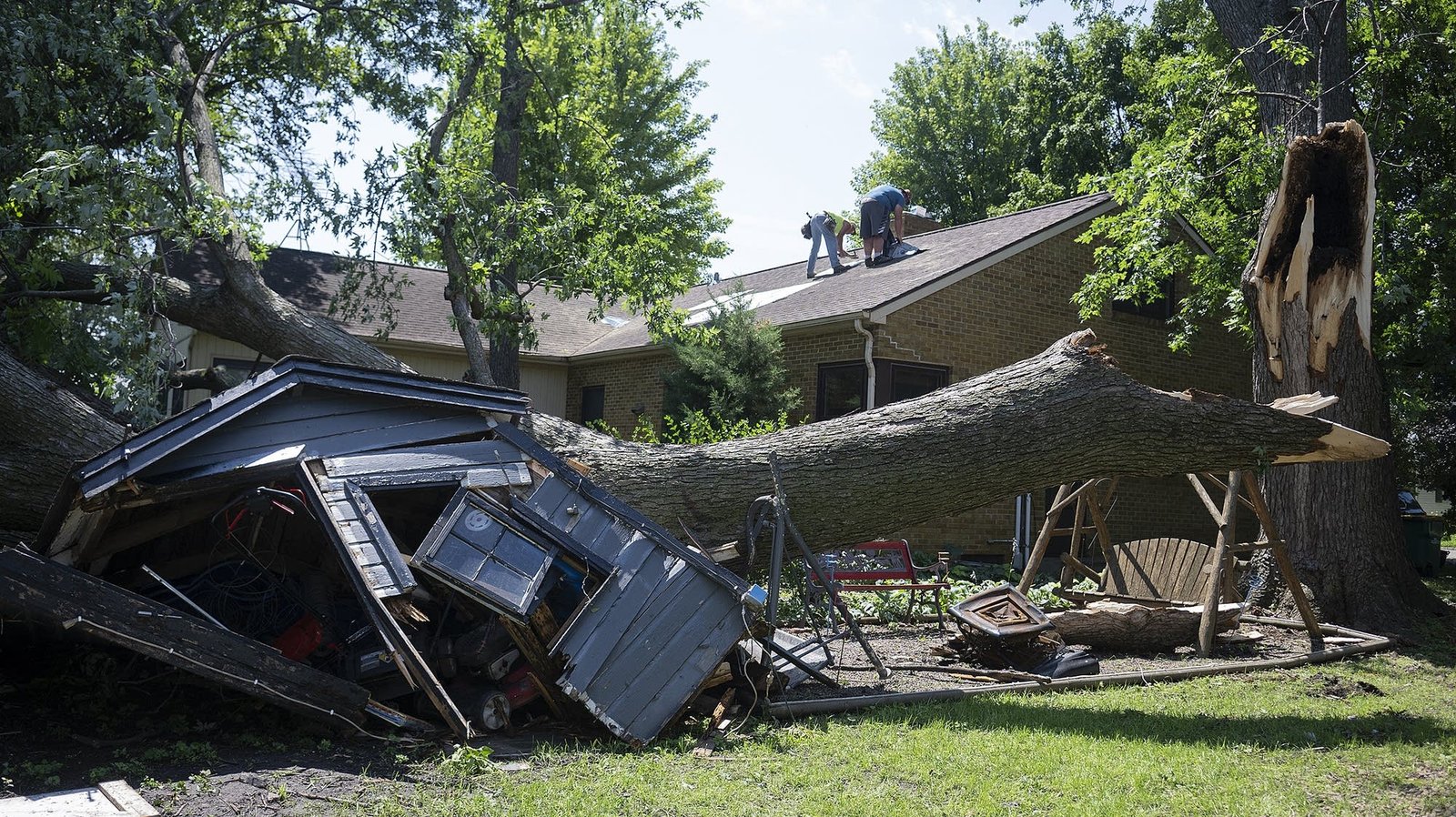As Minnesota cities and counties deal with lots of severe weather this summer, emergency managers are struggling to respond — especially with federal funding cuts to their budgets, and the aging infrastructure that hasn’t kept up with the changing climate.
This summer has been especially difficult for some counties. In Lac Qui Parle County, at least 100 miles of township and county roads were washed out by flash flooding in June 2025. The county’s emergency management said it cost taxpayers about $268,000 in damages.
“We’ve had seven tornado warnings this year,” said Blain Johnson, Lac Qui Parle County emergency management director. “Just too many to count. Severe thunderstorm warnings that have really impacted the community and the local county quite intensely.”
Johnson, who also serves on the Association of Minnesota Emergency Managers, said that it’s been getting worse not just for Lac Qui Parle, but for other counties statewide.
“It seems like every summer now we have a lot of flooding, and it’s worse than ever, too,” he said. “So we’re stretched really, really thin as emergency managers. And a lot of these counties don’t even have full-time programs, and we don’t have full-time programs a lot of the time because there’s such a funding risk. There’s just very little funding there.”
Stormwater infrastructure can’t keep up
It’s not just counties, but cities too. The stormwater infrastructure many Minnesota cities have aren’t meant to keep up with the severity and frequency of rainfall. Craig Johnson, lobbyist for the League of Minnesota Cities — who has no relation to Blain Johnson — said much of the state’s stormwater infrastructure was built “many decades ago” and designed for urban flood control.
“It was designed to get water off the streets quickly and out of the city as fast as it could,” Craig Johnson said. “They were not built and probably could never be built big enough for the types of rains we’re seeing now where we get three to five inches of rain. Cities are not prepared for that level of rain event for the most part.”
However, Minnesota has attempted to help local municipalities address infrastructure needs. During the 2023 Legislative session, the state invested over $100 million in the Climate Resiliency and Water Infrastructure Grant Program for local and tribal governments and about $5 million for the Local Climate Action Grant Program.
The Minnesota Pollution Control Agency, Craig Johnson said, uses these funds to provide cities with planning grants to assess risks and find options and develop plans for stormwater infrastructure and its ability to withstand impacts by climate change.
These dollars are also meant to help fund construction projects designed to increase resilience to conditions caused by inclement weather events. Craig Johnson said there’s also grants to help develop and reduce the local causes of climate change.
“It’s not enough to meaningfully do everything that needs to be done out there,” he said. “But it is enough to help cities potentially get the money they need to act sooner than they could. Otherwise, it probably wouldn’t fund the whole project. But, it would give you enough extra so that your existing capital budget could better handle the upgrades you’re doing.”
Proactive instead of reactive
But federal cuts left counties like Lac Qui Parle in a tough spot. Blain Johnson said the county saw about a 25 percent cut to its emergency management performance grant. The federal government provides funds to Minnesota, which the state then takes about half the funds before distributing the rest to the counties, where the remaining half needs to be matched locally.
For Lac Qui Parle County, Blain Johnson said they only received $15,000 for their overall budget instead of $20,000, which must also be spent for training, travel, updating plans, etc.
He’s hoping that the state funds emergency planning rather than responding to the aftermath, which he believes would be more cost effective in the long term.
“Why don’t we prioritize preparedness and funding that, instead of always looking back and paying multitudes more money on damages that happen?” Blain Johnson added.
There are no state dollars allocated for county emergency management. Blain Johnson said all those dollars come directly from the federal level—and there’s no relief in sight from the frequent storms and the demands in expectations with less money to work with.
“It is really hard to manage [emergencies] when they’re happening, and recover from them and prepare for the next one,” he said. “Because there’s nothing out there anymore. And then, you see on the federal level things being cut, things being cut. So the positions are threatened, and there’s no state level funding mechanism right now either.“
These funding shortfalls might even lead to some tough decisions for emergency management. The Association of Minnesota Emergency Managers said some counties might have to dissolve their services or consolidate because of budget cuts.
And the access to funds comes with strict requirements in order to use them. Which, Blain Johnson of the Association of Minnesota Emergency Managers said, gets expensive.
“The funding just slowly gets cut and cut and cut in an atmosphere where we’re having more disasters, worse disasters and the public expectation is higher than ever,” he said. “We’re expected to do all these new requirements locally, state and federally with as little funding as we’ve probably ever had, and something is going to give.”
MPR News correspondent Regina Medina contributed to this report.




